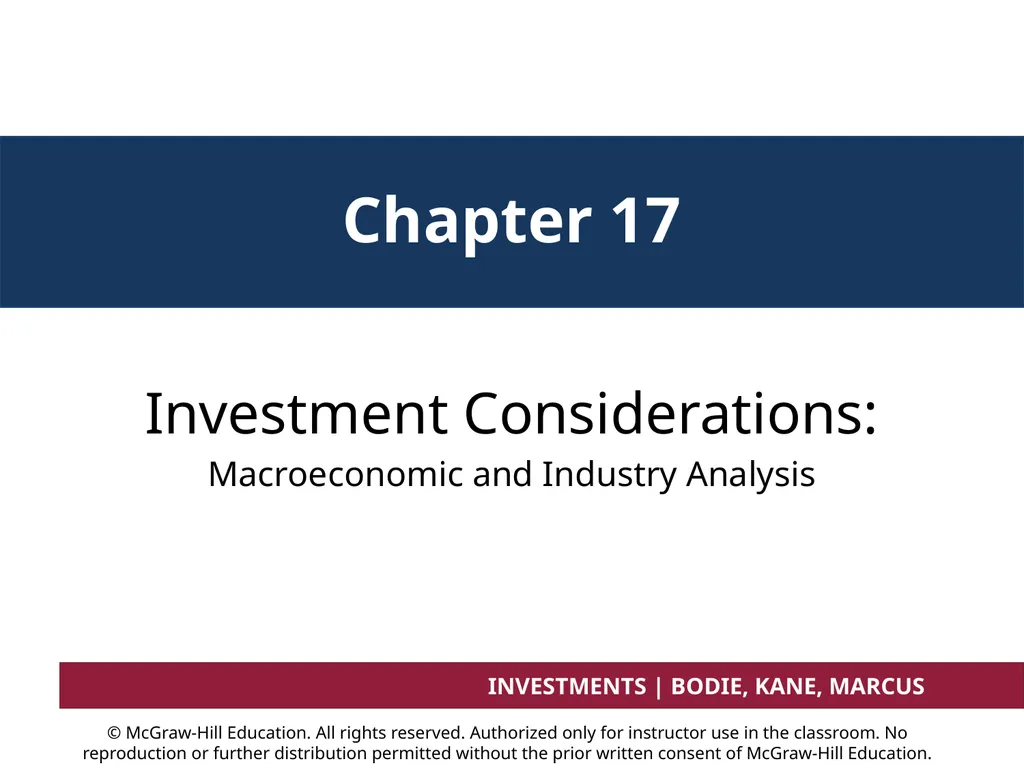
Chapter 17 Investment Considerations:
Author: marina-yarberry | Published: 2025-05-23
Description: Chapter 17 Investment Considerations: Macroeconomic and Industry Analysis INVESTMENTS BODIE, KANE, MARCUS McGraw-Hill Education. All rights reserved. Authorized only for instructor use in the classroom. No reproduction or further
Download Presentation
Download the PPT/PDF: Download
Transcript:
Loading transcript…